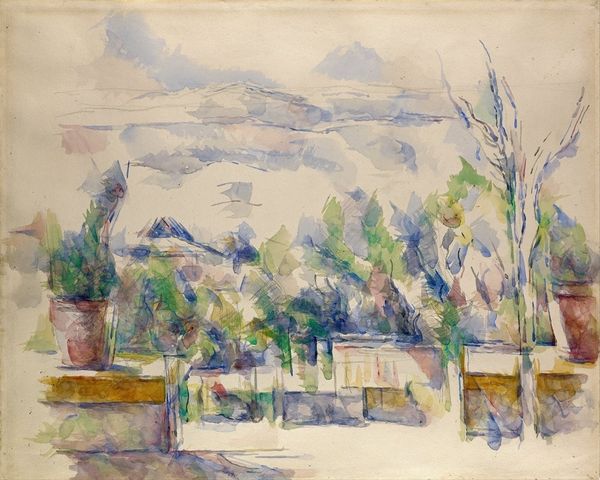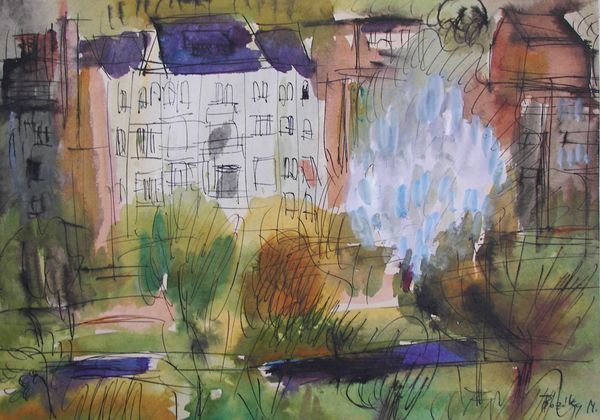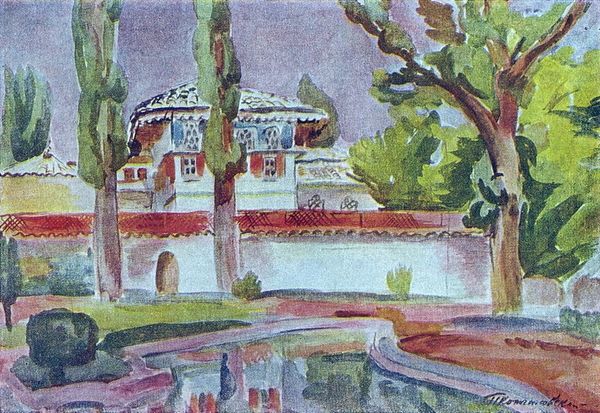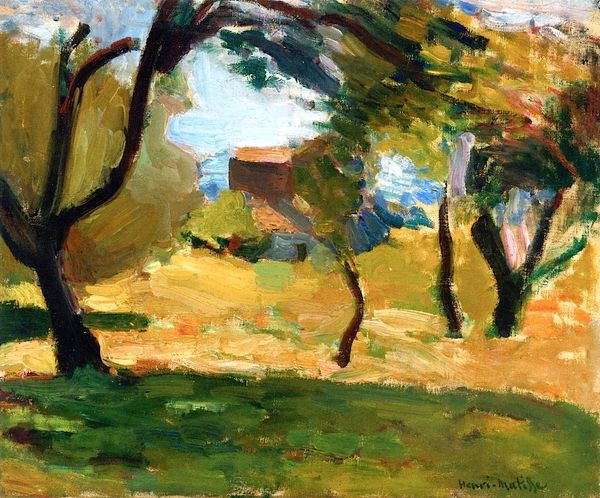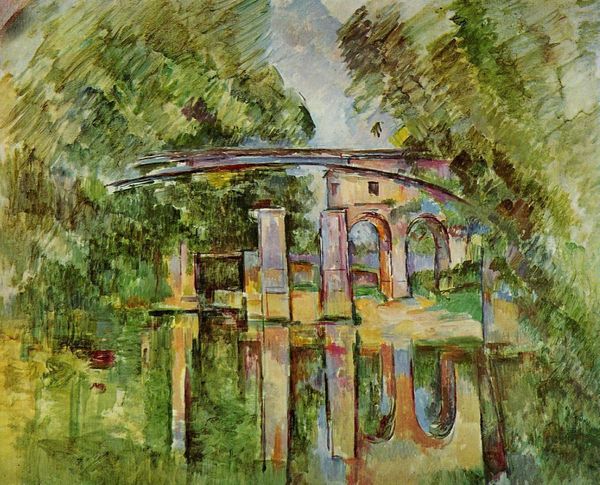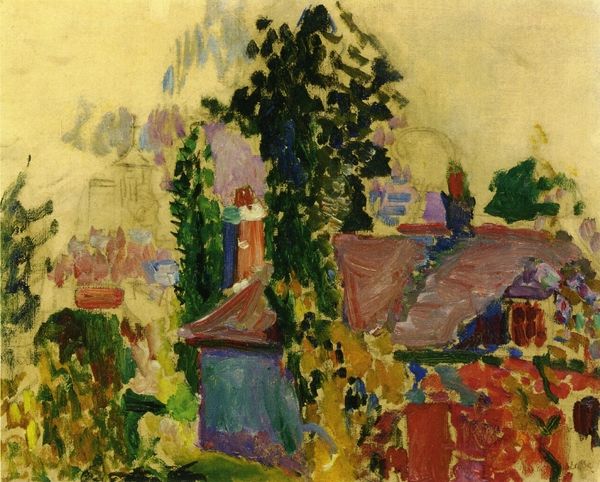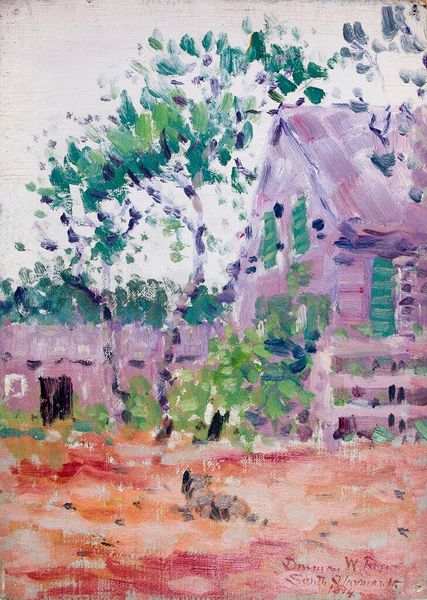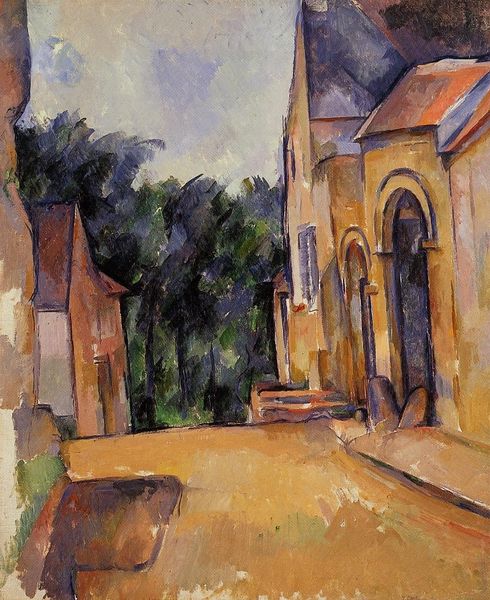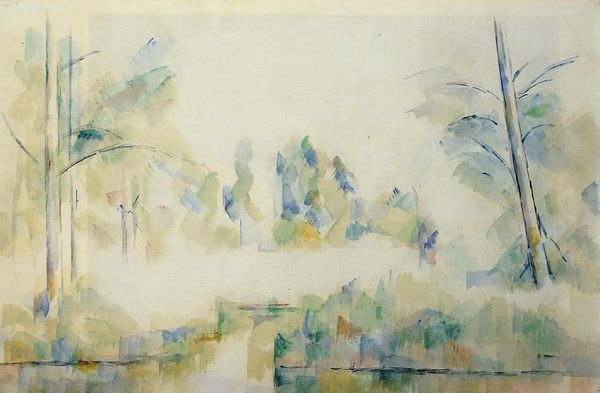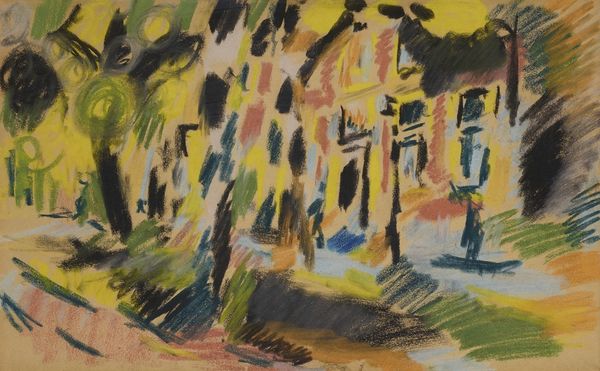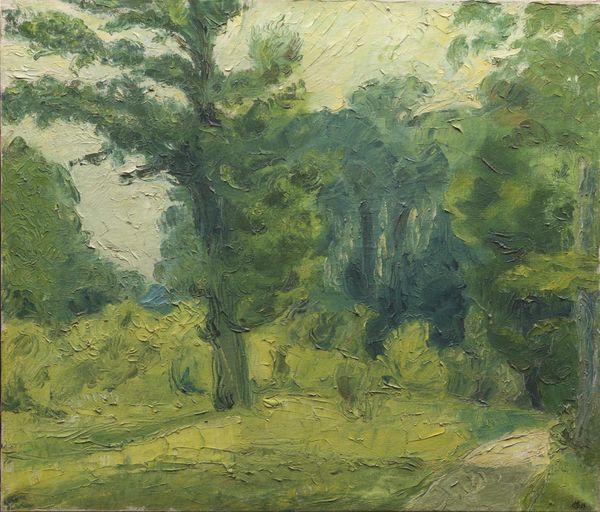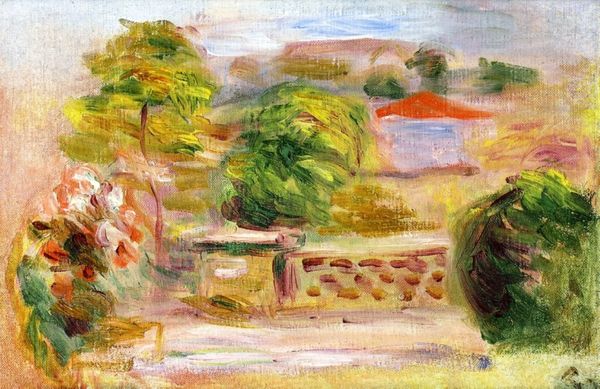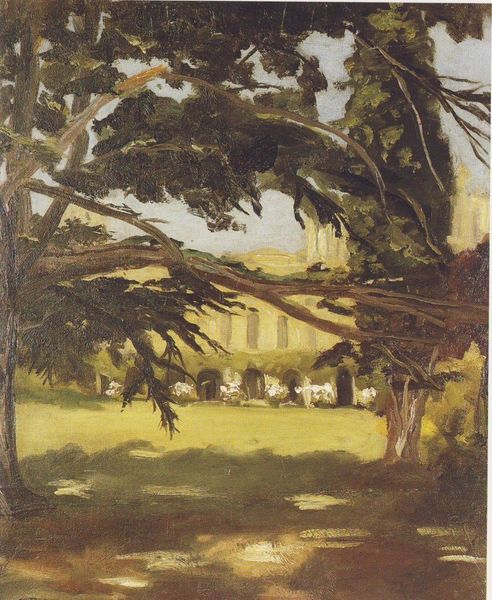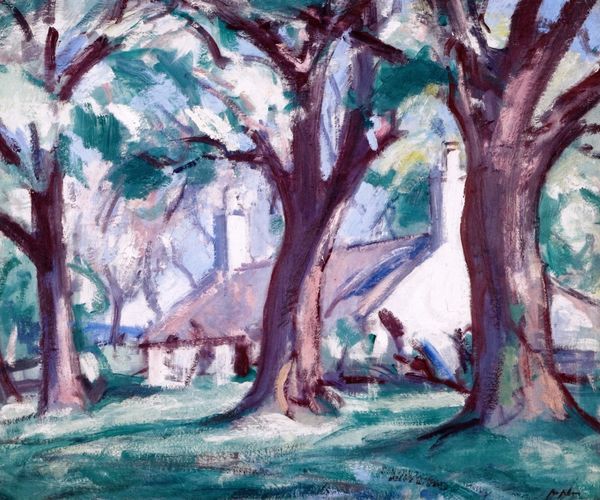
painting, plein-air, oil-paint
#
painting
#
impressionism
#
impressionist painting style
#
plein-air
#
oil-paint
#
landscape
#
impressionist landscape
#
oil painting
#
cityscape
#
post-impressionism
#
academic-art
Dimensions: 75 x 92 cm
Copyright: Public domain
Curator: Let’s delve into Paul Cézanne's "Castle of Marines," created around 1890 using oil on canvas. What's your initial take on it? Editor: My first thought? It feels like peeking into a secret garden. There's this hidden castle, barely visible through a curtain of greenery, creating an aura of mystery, as if the house is a ghost. Curator: It's fascinating how Cézanne situates this private property within the changing French landscape of the late 19th century. Post-impressionism rejected literal depictions, emphasizing personal vision—how does this impact your viewing experience? Editor: Absolutely, and what strikes me is how solid everything feels, yet it's built with fleeting strokes. Each dab of color isn't just color; it's a moment captured, an emotion rendered, even that tan foreground which brings out all of the colors in the house. He sees the scene and transforms it. Curator: Cézanne was breaking from academic art's conventions, shifting towards modernism, influenced, we can note, by plein-air painting which revolutionized how artists engaged directly with the environment. Editor: Right. I am trying to envision Cezanne, there in front of his house, painting in such a loose, unstructured way, that looks really difficult! There is nothing obvious there. And also, this kind of painting forces the eye to make up its own mind: a new form of "active perception," isn't it? Curator: Precisely! It requires us, as viewers, to engage more actively in piecing together the scene. Now, consider the role of landscapes in French national identity at this time. Cézanne, while seemingly painting a simple scene, was participating in defining Frenchness during a period of great social change. Editor: A scene that is more like a psychological portrait than just any other landscape! It hints to a sort of reclusive state, where the house almost blends with the green that surrounds it. Overall, I think Cézanne’s technique invites us to not only see but also truly *feel* the landscape. Curator: And with the artwork being now located in the Collection of Emil Bührle in Zurich, this tells us of how tastes of his artwork also influenced the evolution of the early collectors’ circles and their artistic values at that time. Well, this analysis definitely provided an enriched view into Cézanne's "Castle of Marines"! Editor: I concur! This has encouraged me to spend even more time enjoying his personal expression of landscape!
Comments
No comments
Be the first to comment and join the conversation on the ultimate creative platform.
